DEMARCO, Richard 1930
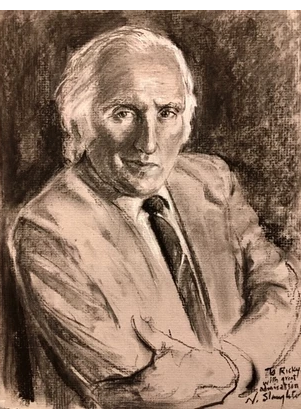
https://sounds.bl.uk/Oral-history/Art/021M-C0466X0242XX-0001V0?fbclid=IwAR1HzMUVhKdUwqna-b34u6ChmiE7AHAlSoXK_AM2mpBYQTlodJ4Uq46O2To
Ricardo Demarco was born on the 9th of July 1930 at 9 Grosvenor Street, Edinburgh. His father was Carmino Demarco and his mother was Elizabeth Valentina Fusco. His maternal Grandparents were John Fusco and Maria Brattisani. His paternal Grandparents were Antonio Demarco and Maria Giuseppa Corio. He is my second cousin related through the Brattisani [Brattesani] line.
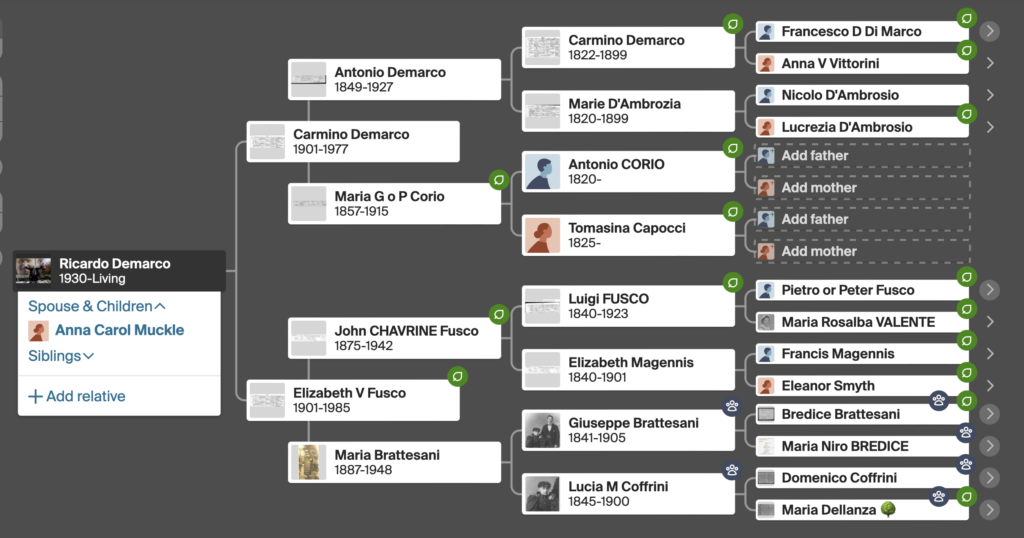
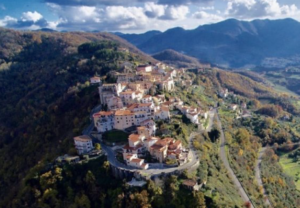
This branch of Demarco family came from the Hamlet of Picinisco which came under the Kingdom of Italy after the Unification of Italy in 1860. Scots/Italians claim that 60 per cent of Scots\Italians came from the regions of Picinisco and Barga region, a true statement if I ever heard one.
Picinisco can claim to be the mother to many Scots Italians including those with the surnames Arcari, Arpino, Fusco, Capaldi, Demarco\Di Marco, Pacitti, Pelosi, Di Lucca, Di Ciacca, Bianchi, Valente, Martini and many more. Interesting to see that when you do a bit of genealogy research how these families are intertwined and there is much social interaction between them all.
DEMARCO CONNECTIONS
RICHARD talking in 2005
In the days when my families made up their mind, the Di Marcos, to leave Italy, they were literally the personification of the peasant world of Europe and they had their national Dress, their wonderful dress and their marvellous folk songs and stories and tales. ‘Chicoria’ is the name of the culture and it is a very rich culture, and they are actually poised as being Romans and Neapolitans.
And if you go a little bit further South from where this community is, it’s called Picinisco, you find something like 8 or 10 kilometres away you are on your way to Monte Cassino, certainly to the town of Cassino. You are on the main trade route between Sicily, the Orient and Rome, and you are very conscious of the fact that if the Roman Empire collapsed and the Roman soldiers, or Army or whatever, felt the need to escape from a collapsing way of life, they would probably leave Rome and try and find some sort of security and safety from the marauding vandals in places as remote as possible, because I am sure that the origins of these types of communities is that you would try and eek out an existence where you would be above the main trade route where everybody was moving.
And even until the days of my family’s decision to move, they were at the end of a dirt road, very steep winding road, and they were in a village with no electric light and even in the 50s you would be met with someone holding a candle, and your car, if it managed to get up that dirt road, would have its engine emitting steam. You wouldn’t be thinking “Oh Gosh that was a nice easy thing to do”. You would have felt that you had achieved something if you arrived there and you had possibly gone back in time.
I learned where my family came from from my father who would not like me to listen too closely to the strange dialect that these people spoke, which he told me was not Italian but a kind of almost slang language impenitrable to any Italians who were not from there and he would say to me “Don’t listen to that, it’s not Italian”. When I was very young he did speak very good Italian, my father.
It was his his father and mother that first left the Region but they died very early on, not long after they arrived, and they were very shadowy figures. I can’t remember their names, but I could by the time I finish this whole process, because I’ve got to have access to certain information from my mother’s youngest sister who is thankfully still alive. She is well in her 80s, mid 80s. [she died in 2010]. It is very difficult for me to focus on that because I remember thinking my father was someone who was intensely Italian. Carmino, not a name you translate easily, there is no equivalent in English.
Carmino Demarco. He was a very important figure in the family because he was the young son and very much younger brother to his sister Christina, known to everyone as Tini, a very dominative woman, just as my father was a very small man, just around 5 feet 2.
She was 22 years older than my father and she ran the whole empire of the Demarcos. A woman possessed of business acumen, terrifying personality presence. She was not a Marlyn Brando figure in the Godfather she was the Godmother. She was responsible for turning the business called ‘Maison Demarco’ into a thriving pre-war catering business.
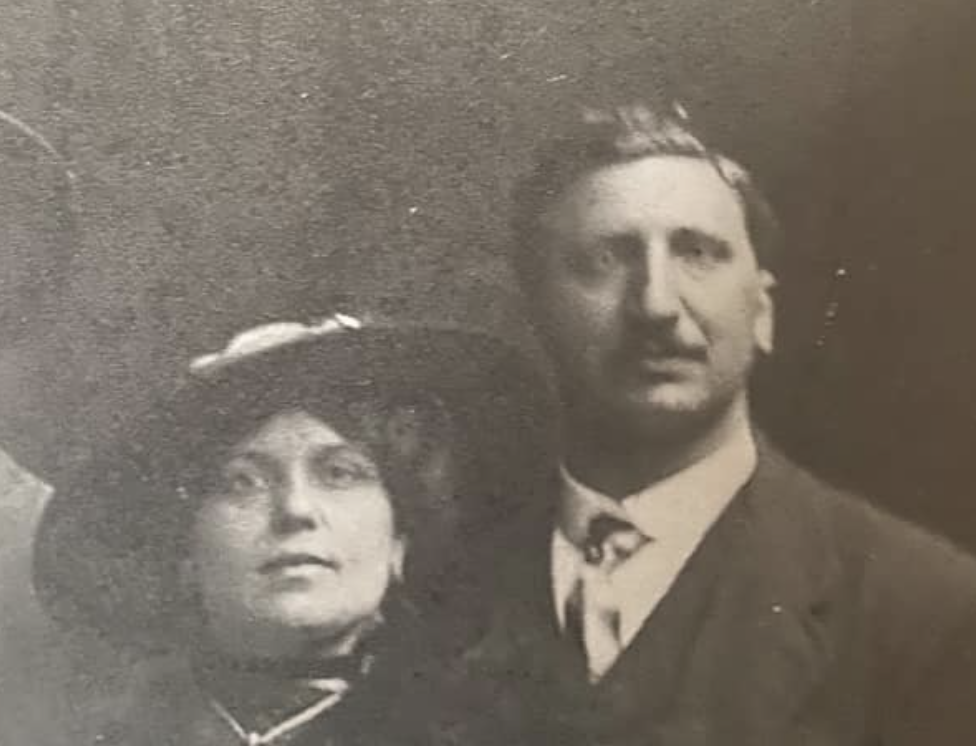
My memories of her as a child were quite terrifying. I knew she was my enemy. I knew she treated my father in an absolutely terrifying way, as a slave, a willing slave up to a point, giving him practically nothing in terms of money, but giving him food and a secure future. As long as he worked seven days a week, fourteen hours a day, and he was really as you like the Chief Executive as she didn’t do the work. She sat around counting the money. She spoke to people, welcomed them along with her extraordinary placid husband Gabriele Demarco.
She didn’t look at all like a Scottish housewife. She had all the allure of a foreigner, in fact a Parisienne. They spoke French, Gabriele and Christina, as well as they spoke English or Italian.
THE DEMARCO MANSION – THE MAISON DEMARCO
2005
My father was very conscious of this French quality. The building of Maison Demarco was along the lines of a Parisienne cafe, it was like walking in to Le Margo, a small version of La Capole. It smelt of the French cigars which my uncle Gabriele smoked and you could swear you were in Paris because as the evening drew night you would hear wonderful music from a wonderful little Orchestra. The stained Glass Windows were Art Nouveau. The tables were made of marble. The dark mahogany wood was straight out of Paris. The cutlery and the crockery was spectacularly well designed. It was nothing that Edinburgh deserved. It was a whiff of the reality of Europe.
I was actually brought up in the world of Paris and I remember when I walked out the door of Maison Demarco I could feel it was like having a bucket full of cold water thrown at me. Like I was back in Scotland.
I loved the Smell of the cigarettes and the cigars and the smell of real coffee and the noise of the only coffee machine, I can imagine, in Edinburgh making real coffee. I loved the sight of the waitresses wearing their black and white, their little frilly aprons and little those marvellous things they wore on their head. I loved that the trays were always silver and there was always the mark on them of Maison Demarco.
I loved the fact that my father had the job of providing great dinners and lunches. He was in charge of the catering services which brought him into the world of the Caledonian Hotel and the North British Hotel, the two of the great British Railway type Hotels. One was the Caledonian Railway Company – The London Midland Scottish LMS. The other was London and North Eastern Railway – LNER. They both had magnificent hotels at either end of Princes Street
They provided the ice cream because the best ice cream in the whole of Scotland was Maison Demarco. There was a factory making the ice cream which my father was in charge of, in fact he made it. And I will never forget the smell of the hot milk and the beautiful steel equipment. And if I was lucky I was allowed to get the first taste of the newly made ice cream.
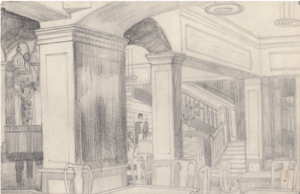
The Demarco Familiy from France No doubt the story of the Demarcos in Paris must have been extraordinary. Because when I eventually got to Paris with my father, accompanied by my father, I’d gone there first in 1949 with my school. It had hardly recovered from the War. But when I went again in 1950, the Holy Year, my father spent most of his time in the Plaza de Concorde – Place de la Concorde – explaining to me that all the statues there were really statues of my relatives ‘There’s uncle so and so, there’s your grand uncle such and such, there’s your grand-something” Men and Women. And I thought, MY GOD.

Proof of this was later given to me when I went to Art college and one of the key models there was a man from that area, Abruzzo, called Mancini. His bone structure and the very colour of his skin, marvellous eyes, extraordinary perfection of his body had made him one of the greatest artists models in London.
But before that he had been an Artist’s Model on the continent and he had become extremely famous because he was the model for Home and Hunt for one of the pre-Raphaelite painters because it was the famous image of Christ knocking on the door holding a lamp at every door which was of course the equivalent of Jack Vetriano’s The Singing Butler. It was in every single house in a Christian Britain.
I remember that he, coming from the same kind of history, ended up as an Artists Model at my early days at Edinburgh College of Art 1949-1950s. I’ve actually got some drawing of him, some very important drawings of him, Mancini. He and Sean Connory, were two of my most important Artists Models. One representing pre-Raphaelite world, luckily. He must have been 80 something when I was drawing him.
CHEVERINE CONNECTIONS
Richard’s grandmother Elizabeth Magennis was born in Dublin around 1840.
She married Jacobe Basquale Cheverine whose family were also from Italy. He arrived at first in Dublin where he met Elizabeth and they married and had six daughters. Basquale was an organ grinder by profession in Dublin. For whatever reasons the family moved to Belfast. I believe they ran a boarding house and this is where she met Giovanni or John Fusco who was working in Ireland at that time.
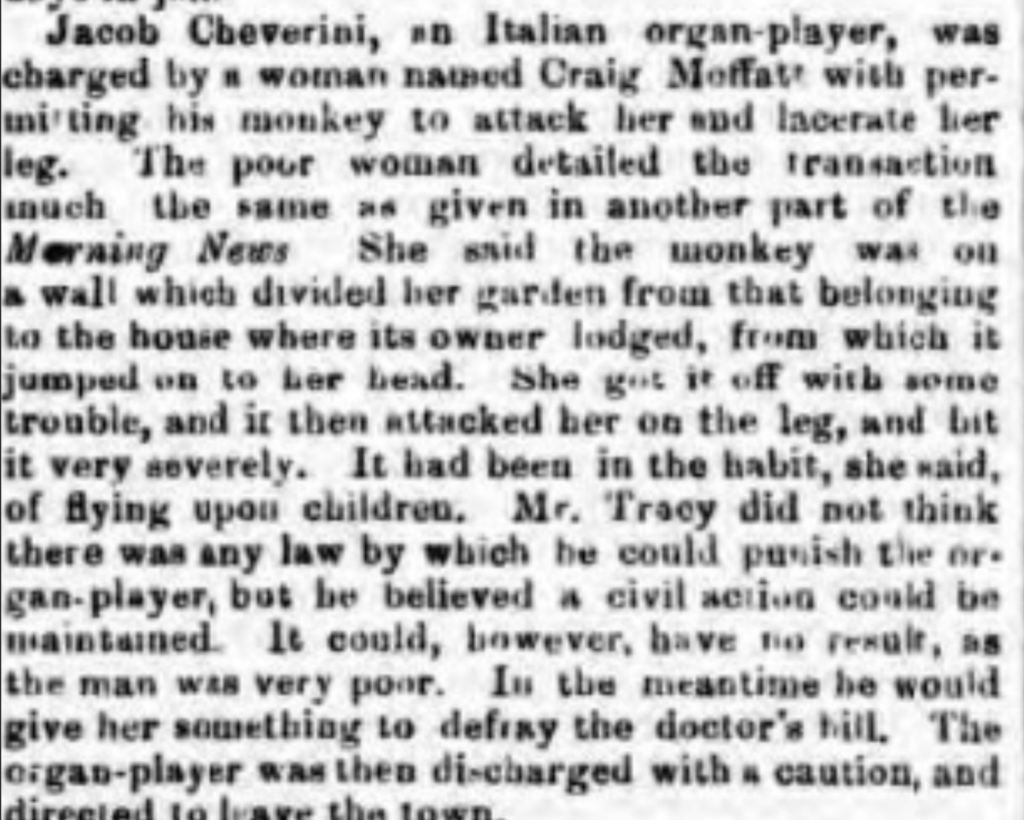
After the death of her husband Jacobo Basquale in 1877, it was rumoured that she may have been. some sort of relationship with John Fusco for some years. They married soon after Basquale’s death. Therefore also a question mark as to John’s parentage. We do know however that his father Louis brought him up as his natural son.
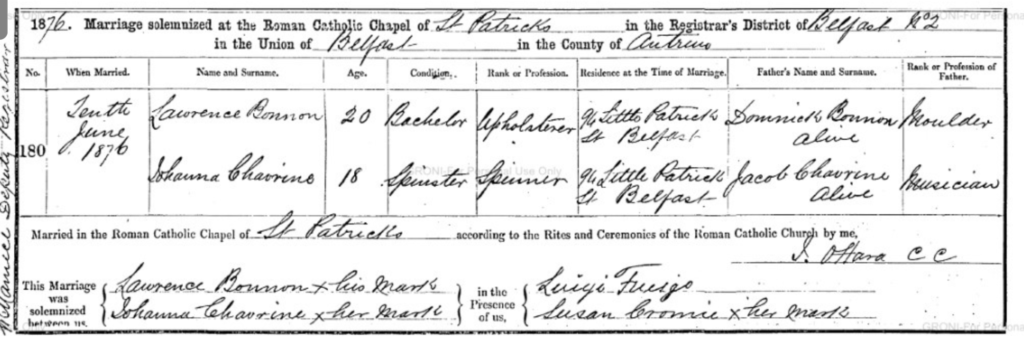
The very interesting marriage between Joanna Chavrine and Lawrence Bannon in 1876. Joanna was the daughter of Elizabeth Maginness and Jacob Chavrine, Musician, described as alive. But you also see that LUIGI FUSCO is one of the Witnesses to this wedding. Date 10th June 1876. The Bannon family went on to become one of Belfast’s best known retail shops selling their own furniture. They have descendants there today.
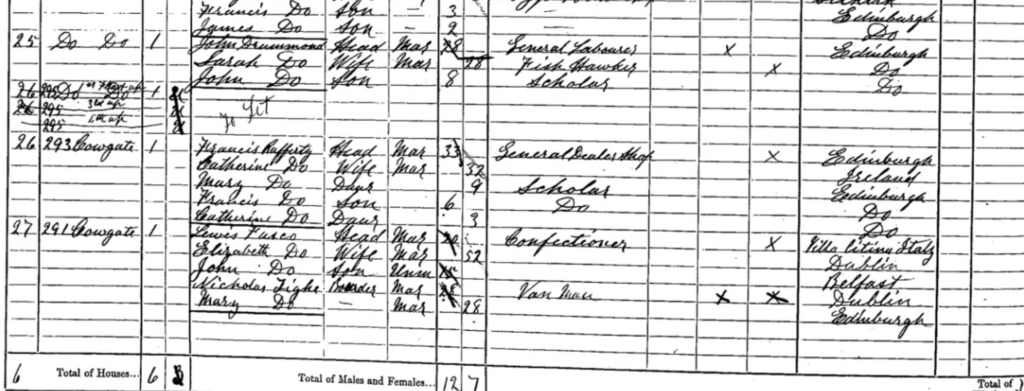
John’s dad Luigi Fusco [1840-1923] had met Elizabeth Chavrine McGinness in a boarding house in Belfast. He married her in 1875. She was a widow with six daughters. GIOVANNI or John was her first son. Then came along Joseph, two Fusco descendants.
Richard’s maternal Grandparents Louis Fusco [Lewis] and his wife Elizabeth moved to Edinburgh with year unknown but here they are residing at 291 Cowgate in Edinburgh’s slum Little Irish neighbourhood. With them son John but no sign of their other son Joseph who was born in the year 1876.
Of course we were connected with the family of the Fuscos through my grandfather’s father who was this survivor of the War which Garibaldi fought as the victor. And his story is an interesting one because he was the son of this wonderful man Giovanni Fusco and this Irish woman who was a widow who I believe had red hair and possibly green eyes and was called Elizabeth Guiness [Maginness]. I think that is why my mother was called Elizabeth. Well if you want an Irish name, you have got it there. She had six daughters, so when they met, she was a widow of course, she found herself with her first son, through my great grandfather, Giovanni Fusco. The daughters were Joanna Cheverini 1858, Maria Luisa Cheverini 1962, Elizabeth Cheverini 1864-1915, Mary Cheverini 1866-1928. One unknown daughter and in fact one son also called Iaopo Basquale 1871-1871.
Richard’s father Giovanni or John Fusco married Maria Brattesani in St. Mary’s R.C. Cathedral in Broughton Street, Edinburgh, on 25th October 1898.
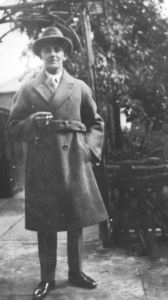
Richard’s recollections about his grandfather John :- at 9 Bath Street, Edinburgh Year 1942. Richard was 11 or 12.
He was so kind to me. The last memory I have of him was on the afternoon of the day he died when he was showing me how to draw. At that age I was drawing away, you know. I was at primary school and I was already loving the idea of playing around with pencils, you know. And I will never forget he picked up a brown crayon pencil and did a drawing with it. This was in the sunlight on an afternoon.
What struck me was the next memory I have of him. By evening he was laid out in his Lay Franciscan Robes, because he was a Lay Franciscan, dead in his marriage bed in the house. In these days you didn’t send them away, so Irish really, there was prayers and the Rosary around the bed and a wake. It’s unthinkable now because we treat the dead like Rubbish, we get rid of them. You don’t want to talk about anybody dead, you talk about it at a Memorial Service where you can chat away about this that and the next thing. But this event was deeply etched in my mind.
I had lost a friend, a gentle, wonderful, beautiful and loveable soul and as I prayed alongside the family in that room which I knew as theirs. Above the little room where I slept, in a narrow, little space, because the house could hardly contain me.
THE BRATTESANI [Brattisani] CONNECTIONS
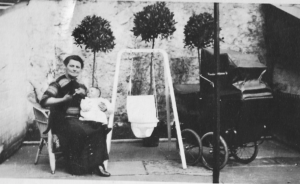
What we have now is an interesting mix of two types of Italians. Now the Fusco family originate partially from Picinisco and partly from the other area where Italians can be associated with in Scotland and that is northern part of Tuscany, they come from not a village but a little town with about 6000 inhabitants again built on a hill, again with its little Piazza but in this case not only with a Church but with a full blown Cathedral, a Duomo. Not just any old Cathedral but the world’s best example of a Romanesque Cathedral.
This town is called Barga and it is where many Italians come from in Scotland, mostly those ending up in Glasgow or the West.
The Picinicsco people are more or less associated with the East Coast, Edinburgh, East Lothian, Firth of Forth, Dundee, East Coast I suppose.
But the point is the Fuscos were not entirely Italian in their mindset, despite the fact that my maternal grandmother, who was before she was married called Maria Brattesani, well her family are associated with Barga [through Quilietti links] as well with the the area around Picinisco [also through Quilietti links] So this is the connection with Barga. But her family, and she was 100 per cent Italian.
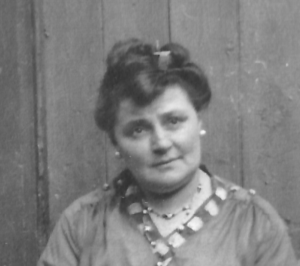
The Brattesani family come from Borgotora in Parma.
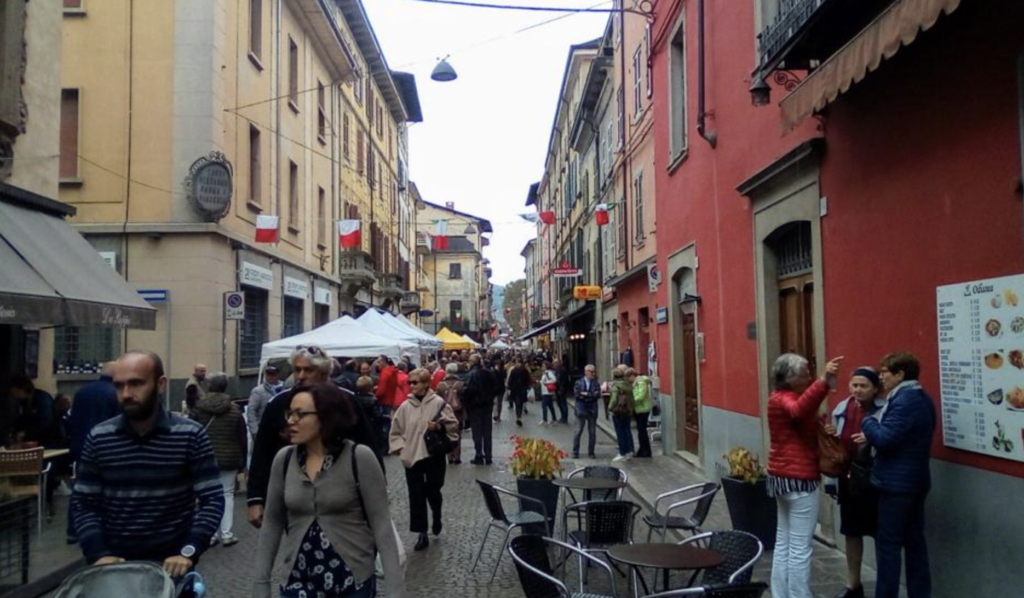
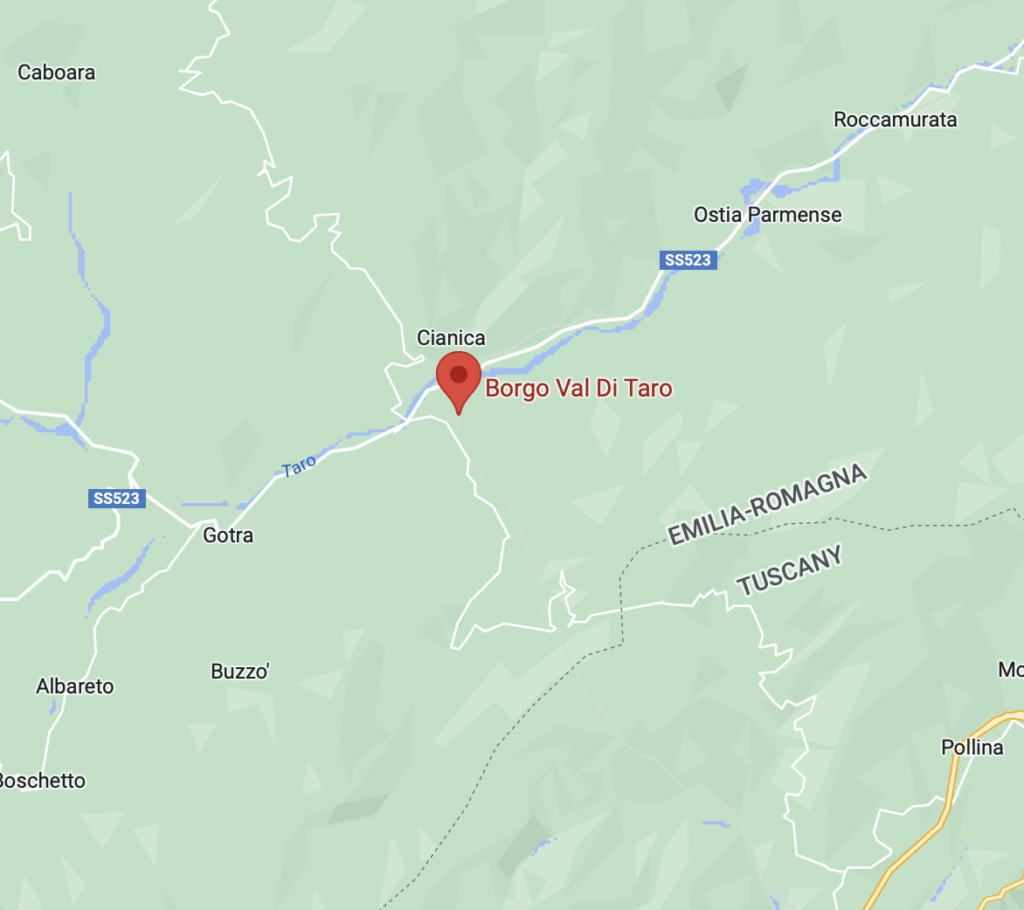
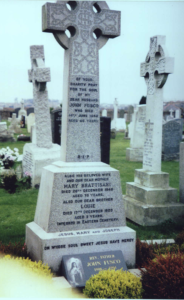
John Fusco moved to Edinburgh with his parents where we find them in the 1891 Scottish census residing at 291 The Cowgate. Lewis described as a Confectioner and son John still with no occupation. Louis or Lewis was born in Villa Latina in Italy and his wife Elizabeth was a Dubliner. Son John was born in Belfast.
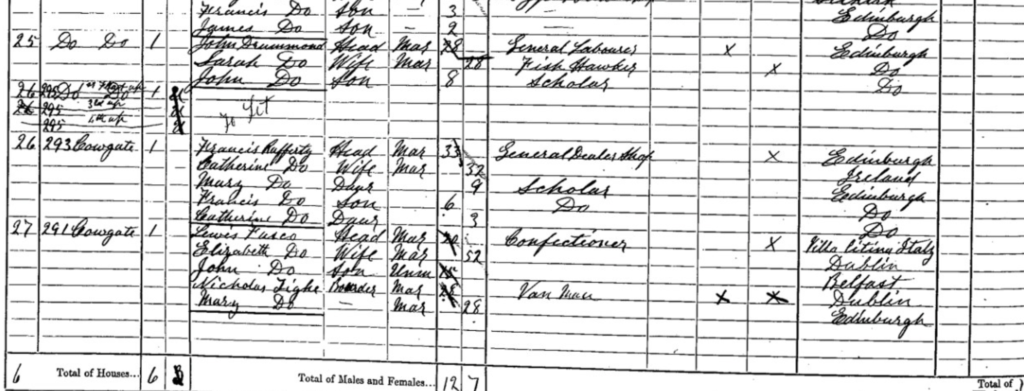
It was in Edinburgh where John Fusco and Maria Brattisani met. Her family resided at the top of Leith Walk in Middlefield. They would have met at St. Mary’s RC Cathedral, where they were eventually married in 1898. After their marriage they moved back to Ireland where they resided with John’s parents in Main Street, Bangor, where his father had a confectionery business.
Their first two children were born there, Luigi and Elizabeth. The whole family then up tools and come to Scotland. Unfortunately Luigi was to pass on in 1903. John’s parents lived with them in the family home at 9 Bath Street until their respective deaths.
RICHARD’S PARENTS Carmino Demarco and Elizabeth Fusco
Carmino Demarco and Elizabeth Fusco married on 9th October 1928 in St. John’s RC in Portobello. Their marriage was very fruitful.
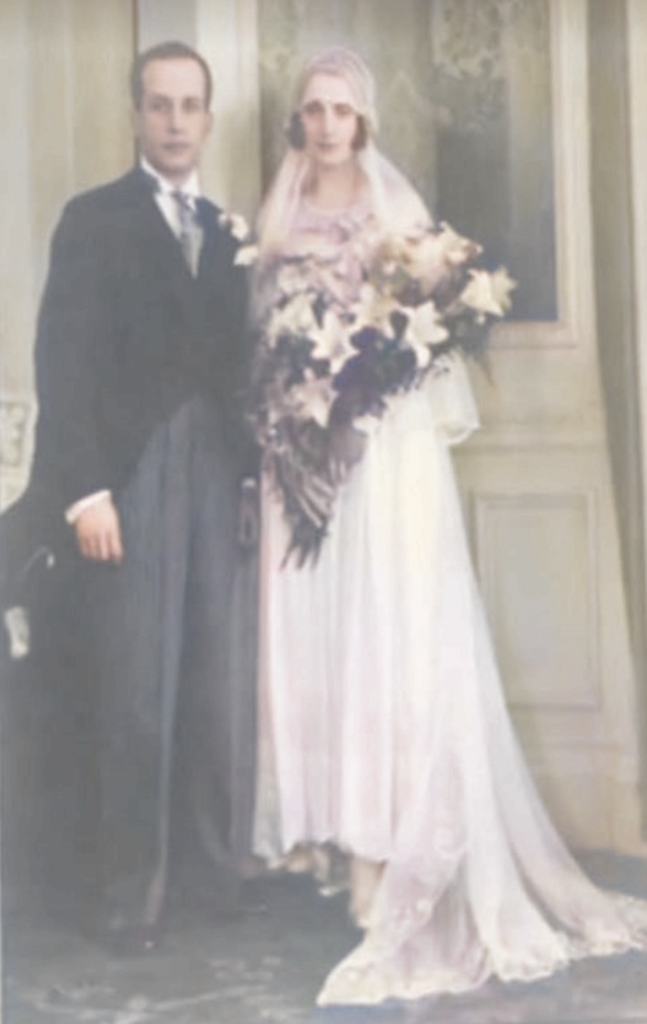
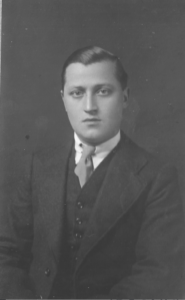
They met I and there was no question that my father was a romantic soul in his desire for perfection, and she was the very personification of La Bella Figura’ a personification of the beautiful and the elegant which the Italians knew all about.
As remembered by Rikki. My father was an extremely attractive person and he was tailor made for social life. He was well liked and a great success as well and known as one of the best billiard and snooker players of Scotland and images of him in evening dress playing against Walter Donaldson the East of Scotland billiard champion, usually coming in needle matches with an incredible well dressed audience at the North British Caledonian Hotel watching this event. Billiards was a game for the upper class. My father was also a very famous athlete and I think he done extremely well in what was called ‘The Powderhall Sprint’. It was a big race which was run on what became the Dog Racing Course in Powderhall in Edinburgh. Now it’s turned into a dreadful block of nameless flats.
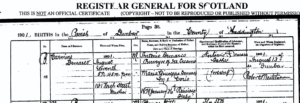
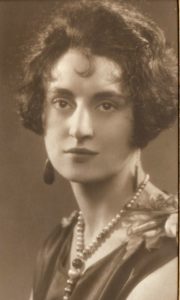
Elizabeth was described as a beautiful lady by her son Richard.
She was stunning like a film star. So elegantly dressed. Aquiline nose. She had blue-black hair. And a very light complexion. You remember that the Fuscos would be 100 per cent Italian looking because of their Irish blood. She was obviously something that my father aspired to as she had great refinement. I think he must have been attracted to her love of music and her gentleness at that time. Also her ladylike qualities. She was a madonna like creature and much taller than he was and older by six months. She was born in 1900, convenient, ok, right at the beginning and he six months later. I was born in 1930 and they were married in 1929. I was their first child
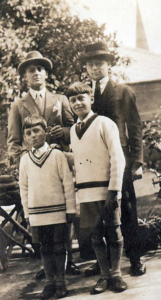
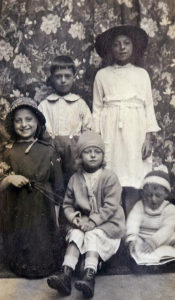
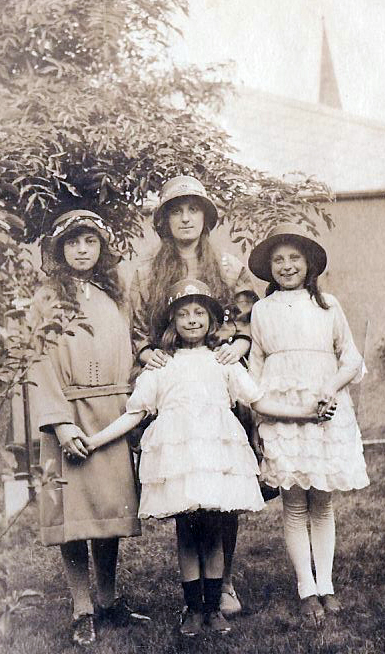

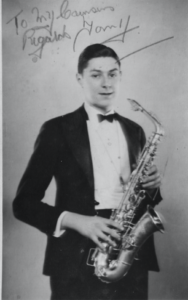
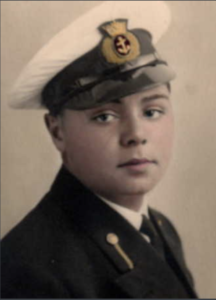
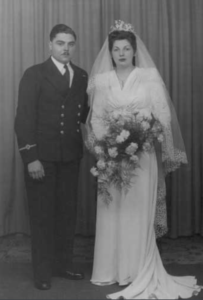
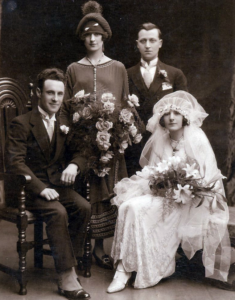
THE CHILDREN OF Maria Brattesani and JOHN FUSCO –
ELIZABATH Direct line – the others are aunts and uncles of Richard Demarco
- LUIGI 1899-1903
- ELIZABETH VALENTINA 1901-1985 married Demarco
- GIUSEPPE 1902-1970 married Angela Franco
- LUCIA 1904-1994 married Edward Dunne Maher
- MARY 1906
- REVEREND FATHER JOHN 1908-1994
- PHILOMENA 1910-1996 married Alex. Donnelly
- TERESA 1912-2000 married John Laurie Thomson
- ANTHONY 1914-1958 married Dorothy Malcolm
- KATHLEEN 1916-2010 died in Joppa Road, no spouse
- FRANCIS MICHAEL 1918-2013 married Mary Brown Cullen
- NOEL 1923-2010 married Teresa Accottola Waddie

SOME RECOLLECTIONS about the FUSCO CAFE called the Marine Cafe on Portobello Pier
The Maison Demarco was the full blooded, the Italian continental expression of a French/Italian Cafe. However in the Fusco cafe’, the Marine Cafe.’ It was called. There was a concession to the British. It was in fact a place where you could get afternoon tea but you certainly didn’t go there to listen to music. But they were successful enough and they catered for the young people who were the rowers, which was the big thing to become a member of the Portobello Rowing Club or the Portobello Professional Rowing Club, the two. Very elegant. And they in fact created the cup that they played for, the equivalent of Oxford and Cambridge. And those beautiful boats. I fell in love with from the moment I saw them. These beautiful, elegant, hand made wooden things being carried out of these two magnificant sheds. The smell of the wood. The sight of those magnificant athletes. What they had was the British style cafe. No smell of Italian coffee and no chance of smelling Italian cigars. The most Italian thing about the whole cafe was my Italian grandmother Maria Brattesani.
The route from Picinisco to UK as documented
Pinched from the Facebook page about SCOTS/ITALIANS from Kieran Allan
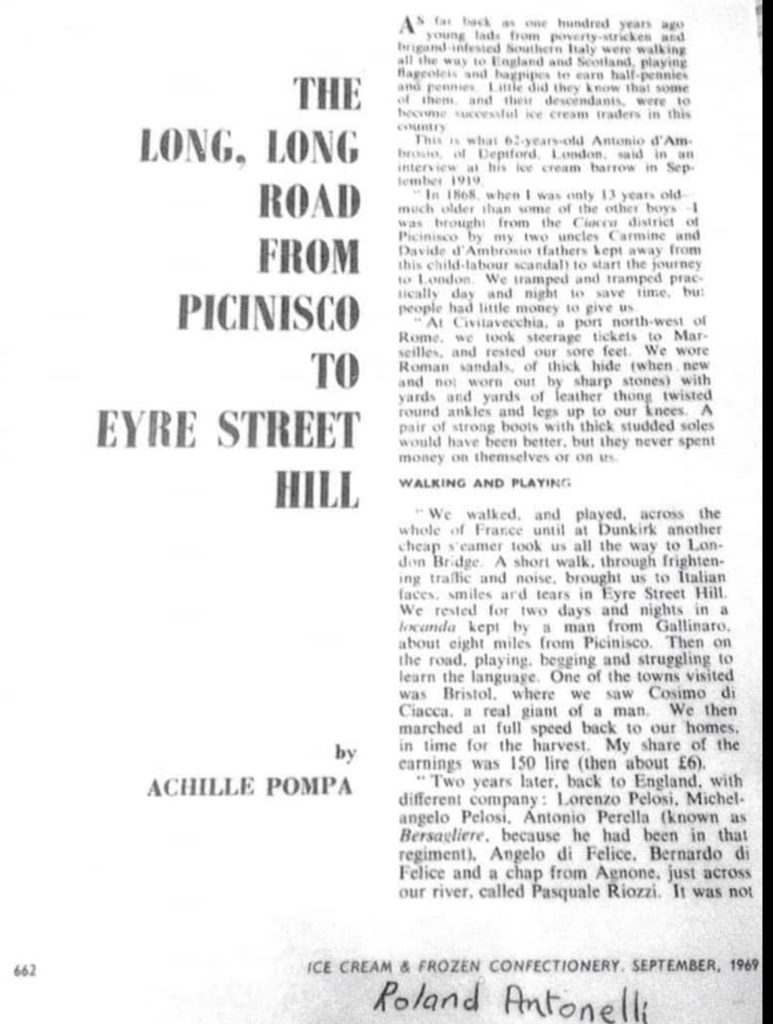
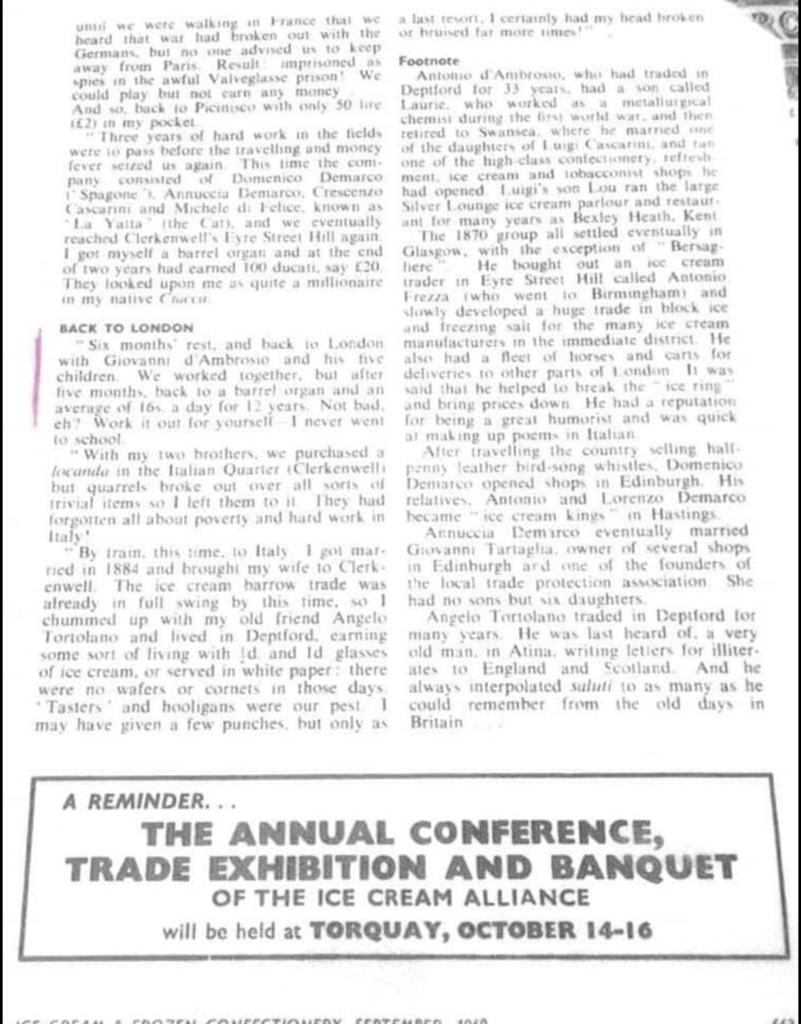
THE DEMARCO, DE MARCO, DIMARCO and DI MARCO families in Scotland
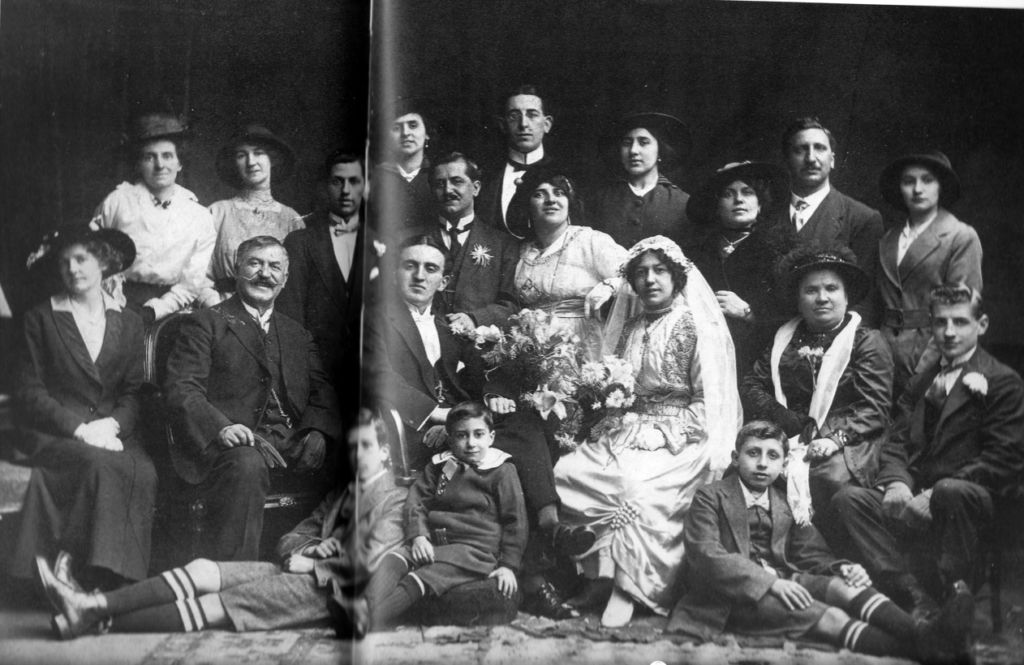
This wonderful photo taken from Teri Colpi’s Book Italians Forward, and with her permission is of the Wedding of Luigi Arcari and Giulia Demarco Edinburgh 1915. There is much social interaction between the two families whose roots both begin in Picinisco in Frosinone, Italy. The couple behind the bride at the right hand side is Christina and Gabriele Demarco, the owners of the Maison Demarco. She is the sister of Carmino Demarco. Can anyone in the family put any more names on the faces. Andrea Demarco is seated front left.
The Demarco Di Marco families who emigrated to Scotland are many. We know already that the EDINBURGH and GLASGOW lines are very much related.
In Edinburgh it is interesting to see how over the years the family grew and became amongst the mighty Edinburgh Ice Cream and Restaurant owners.
- 1905 in Edinburgh the main Demarco lines were Louie, Angaelantonio, Maria, Gabriel and Marie Christina showing in the city archives.
- Luigi and Maria had a shop at 89 Leith Street
- Angelantonio 121 and 123 Leith Street, 2 Abbey Mount, 4 and 5a Kerr Street.
- Gabriel and Marie Christina were the two who had the good fortune to start off in the Promenade. At first they had two shops at 30 and 38 Promenade, a shop and house at 119 High Street in Edinburgh and also a house at 2 Rosefield Avenue. Christina was the sister of Carmino Demarco. Gabriel was the son of Michele Demarco and Maria Carolina Pelosi. So we have double trouble here in trying to sort out the lines.
- By 1915 more of the family were branching out and Angelantonio also picked up premises in 13 Union Place and 146 Rose Street. Gerardo at a 10 Lauriston Place with his wife Mary at 94 Lauriston Place.
- Maria Christina and her husband Gabriel now extending on the promenade 37c, 38, 39, 40 and 45 mostly shop premises
- 1920 – the trend continues with Maria Christina now also showing as having acquired 44 and 47 Promenade which were part of the show ground and a shop studio as well as a bakehouse now along the Prom. Thomas Demarco now with them.
- In 1930 Carmino had a restaurant at 120c Princes Street. Sister Maria and Gabriel with their son Umberto now helping with the businesses in the Promenade.
- The story continues with Maria and Gabriel through to 1940. Now we also see their son Umberto or Bert Demarco acquiring what would be the start of his billiard rooms in West Granton Road. The history of the Portobello Demarco now well and truly established.
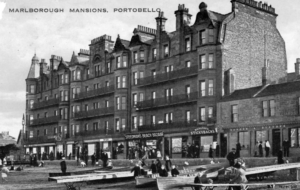



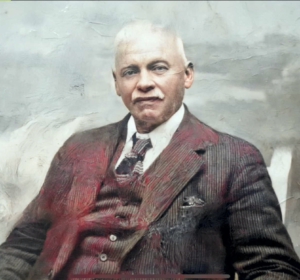
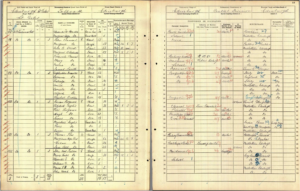
Rikki’s words
The following was extracted from Edinburgh Evening News on an interview given by Rikkie before his Eightieth birthday
I was a breach birth in a nursing home in Grosvenor Street. Then, when I grew up in Portobello, I would play on the beach with my brother. One night, when I was nine, we watched this burning plane coming towards us. It looked like a dragon. I could see the German pilots inside, it was so close.
“Then, suddenly, the sand was flying around us like little golden jewels, and we realised there was a Spitfire behind the plane, shooting it down. If we’d been hit that would have been it. For the tide was coming in too, so if a bullet hadn’t killed us, it would have been the water.
“I saw the news about the pilots’ deaths in the paper the next day and I asked my parents if I could go to the funeral. There are photographs from that day with a small child in among all the adults, and that is me.”http://www.demarco-archive.ac.uk/richard_demarco_biography.pdf
That perhaps is still Demarco. He has a boyish charm and a belief in la dolce vita which he cannot repress. Grey, Presbyterian, pre-Festival Edinburgh failed to quash it. The Scottish Arts Council, which at one point withdrew all his funding, claiming he “had dishonoured art”, failed to quell it. It is the Italian in him, no doubt.http://picinisco.net/
His family came from the southern Italian village of Picinisco his father eventually pitching up in Portobello, where like many immigrants from his native land, he opened an ice-cream parlour.http://www.youtube.com/watch?v=zB0z16ppWdE&feature=related
Similarly, it meant that when war was declared in 1939, the Demarcos were, like all other Italian families, regarded as foreign nationals and interred.
n
He is without doubt a remarkable man, an Italian Scot, an artist, a writer and a philosopher. His work as a watercolourist is held in many international collections including the Victoria and Albert Museum, Tate Britain, the Government Collection and the National Gallery of Lithuania.
His contributions to contemporary art internationally have been recognised on numerous occasions , receiving the Polish Gold Order of Merit, the Cavaliere della Repubblica d’Italia, the Chevalier des Arts et Lettres de France and the Order of Commander of the British Empire.http://www.richarddemarco.org/documents/35.html
He also brought visual arts from other parts of the world, and Eastern Europe, long before other people were interested. He inspired us to take extraordinary journeys in the mind, journeys across Europe, journeys that he calls The Road to Meikle Seggie.http://www.gicleeuk.net/galleries/demarco_archive/index.php/
“I often wonder why I, with the Latin temperament of all my forebears, should now be so completely at home in a city whose character is so essentially northern; surely the classicism of the Latin mind would be in conflict with the romanticism of the Scot? When younger, I deeply resented this conflict and longed for a southern way of life; but this conflict can be a source of real artistic energy. I know now that I am completely at home in Edinburgh in a way I could never be in any Itality city, but part of my pride in her is rooted in the fact that I know it can rank beside those great cities of Italy to which all the world pays homage. This is my City.”
He writes about himself:-
- “I regard my personal experience of each and every Edinburgh Festival as a great blessing. However it also imposes a great responsibility upon me to share that experience with all those who are committed to celebrating the Festival’s sixtieth anniversary. I have the task of presenting an exhibition entitled ‘Demarco’s Festival’ a title suggested by James Holloway as Director of the Scottish National Portrait Gallery, who has most generously given me the support and welcome advice I have needed in order to present the exitibion so that it makes good use of the Gallery’s permanent collection.
- I see these sculptural portraits as an integral part of my exhibition because they provide proof that the Festival has been enriched by the creative energy of the likes of Robert Burns, Sir Walter Scott, Lord Byron, Lord Cockburn and James Watt and by the general spirit of the Scottish Enlightenment which transformed Edinburgh from an overcrowded medieval cityscape into becoming Scotland’s equivalent of Bath, in the shape of Edinburgh’s New Town as The Modern Athens.”
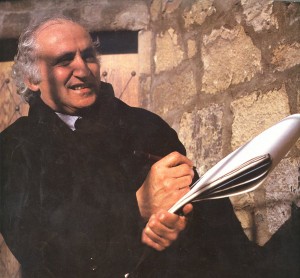
His love for Italy continues and he goes there frequently and
Below are some wonderful articles that Richard has written about being Scottish, about his pal Sean Connery and also about Ian Hamilton Findlay. Enjoy…..
.http://www.richarddemarco.org/documents/articles_1.html
http://www.richarddemarco.org/documents/articles_1.html
http://www.richarddemarco.org/documents/articles_
1.htmlhttp://www.worthattention.com/richard-demarco-and-joseph-beuys-on-the-road-to-meikle-seggie.html
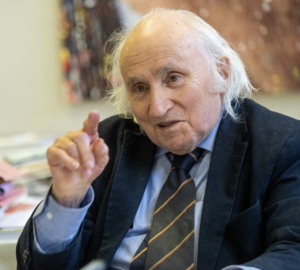

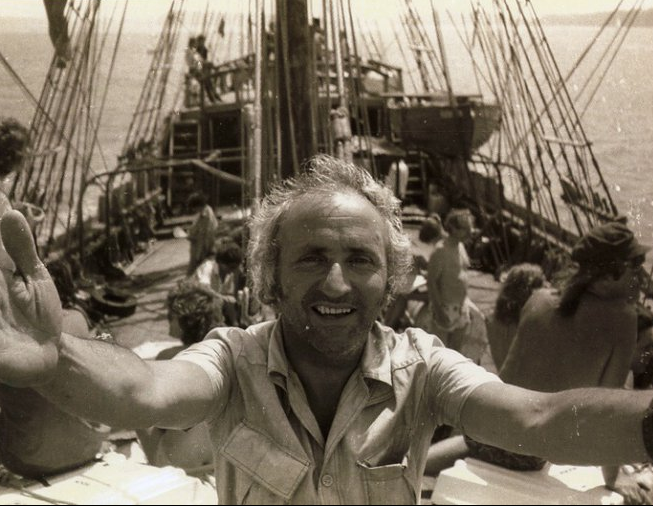
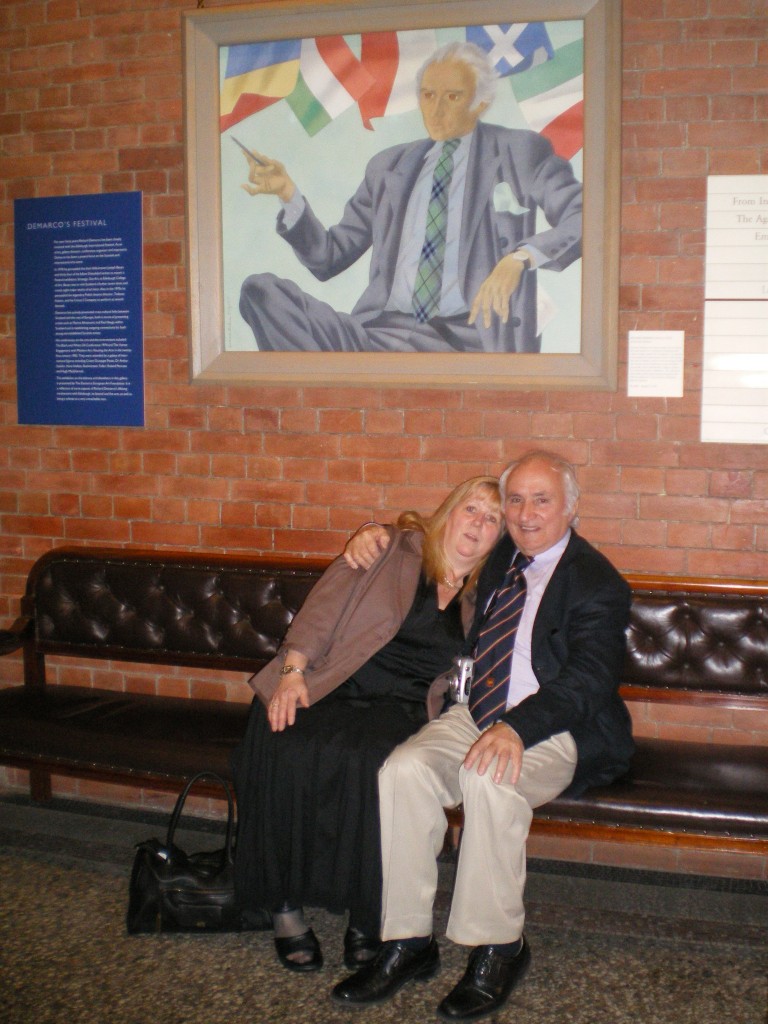
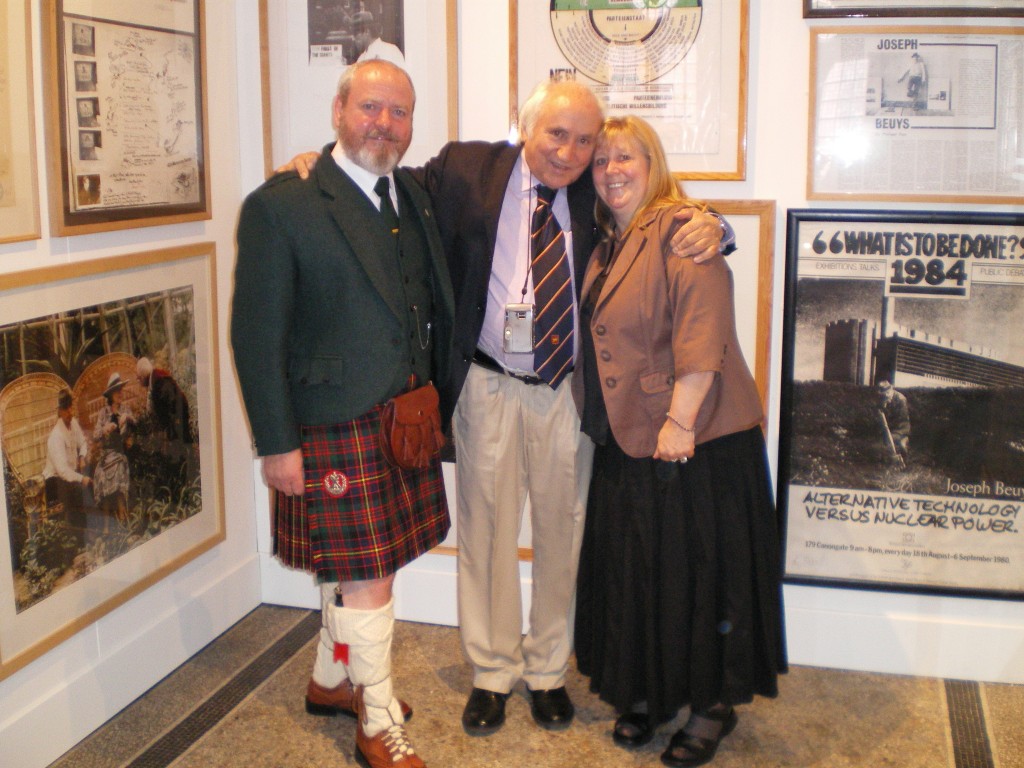
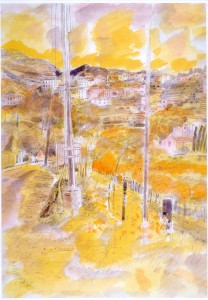
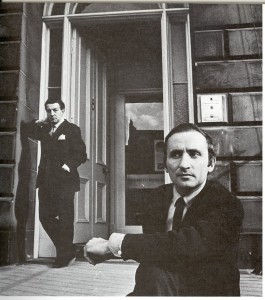
Hi Helen, if I have the right name and person not written to you for a while, I just recently found out that I’m, related to Richard Demarco an Italian lady told me he told my friend that he was a cousin to my granma,s sister Auntie Aunnie Who married Ernest Demarco and my grand was Gerado Demarco, I did wonde if we were related I have never met him I paint and draw too , so he is my mum,s Cousin Anita Claudina Demarco I have the Album and tree almost done, but still a bit to go go , hope all U.S. well with you and you don,t mind me writing to you Anna Valente
Hi Helen,
Do you have anything in your archive about Richard Demarco’s fathers brother (his uncle).
I am looking into a family connection.
Kind regards,
Paul
Thanks for leaving your comment Paul. Domenico or Thomas married Maria Carmella Demarco. She was the daughter of Andrea Demarco and Carmelia Demaraco. Thomas and Maria lived in Glasgow. I only have one daughter for them Norma born 1930. There was another brother Alfredo but I have no information at all on this line.
Hiw exciting for Ricky to find new relatives at this late stage!
I met him in April 1972 & this has been a precious friendship.
Imagine – he will be 90 very soon but still has such vast energy
Hi i am the son of Norma De Marco
she comes from cuisine of Richard De Marco , her father Domenico was brother of his father and i wish if you could send me some informations about him and the generation
thank you
Hello Mario and thank you so much for your note. Richard Demarco is of course a famous Edinburgh Entrapeneur and now at 90 trying to raise funds for his archives to be saved. You can go online onto his site and email him from there. Everything else I know I am trying to put onto the website. You can simply type in http://www.demarco-archive.ac.uk and his life story is there. I would love to share you and Norma by adding you to the Demarco part of this site if you would consider. Would be great and then the other sides of the family can be in touch with you from there. Where do you stay Mario?
I have fond memories of Ricky, we travelled in the bus together when he taught at Scotus Academy.. I now ;live in Calgary Canada and always made a point of contacting Ricky when I visited Edinburgh..
My husband Stan also has a connection to Ricky, his father played piano in the orchestra at Demarco’s Cafe on the promenade .Stan’s father was in a group called Murray Sheffield and his Boys.. Stan’s father lived at 12 Bath Street Portobello at that time. Stan’s grandfather was a master baker at Forsyth’s the baker on the corner of Bath Street.
Ricky told me he had a movie of Stan’s father but we have not been able to see it?
During a conversation about Art at a lunch in New York it turned out that my friend John Halpern had worked with Ricky at the Festival in Edinburgh in the 60s., it’s a small world!
THANK you for posting your memories. I have approved your link and hope that he might read it. He is over 90 now and busy trying to get all his archives in orders.
My Nonna Paolo Coppola (second from left beside the groom) is in the wedding photograph and I have an original print of the same picture.
Hello Richard,we met once,I New your wee brother Louie’s.
Anyway while talking to brothers they mentioned that My grandmother and sons where allocated your family home in portobello in 2nd world war Year’s.
Ironically she’s buried 20 feet away from the Demarco plot Mount Vernon.
Will send more details later.
All the best to you and Louie.
Matthew Donoghue.